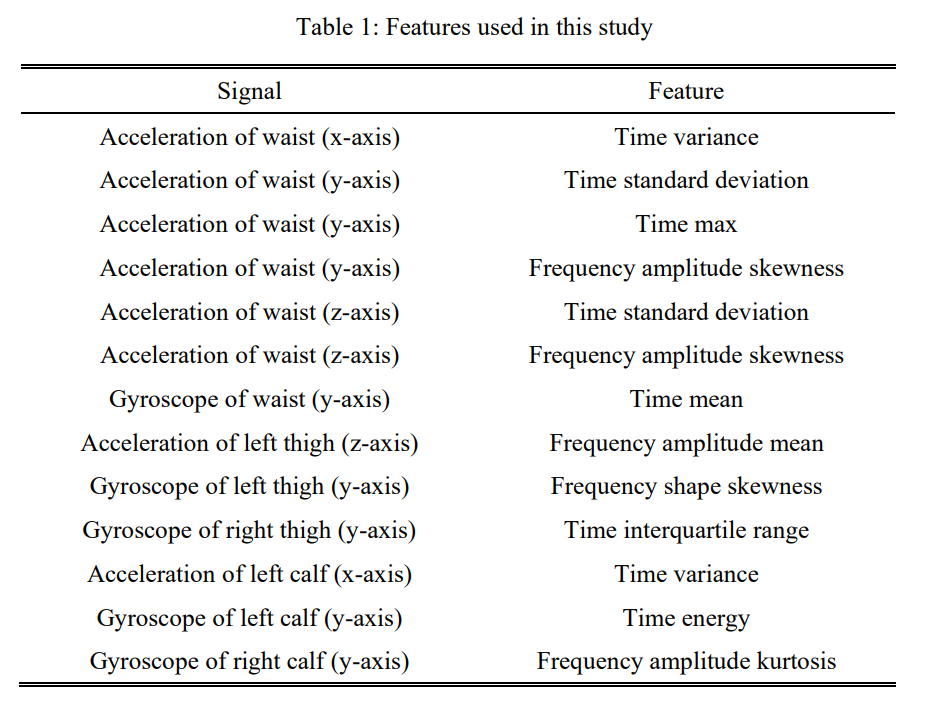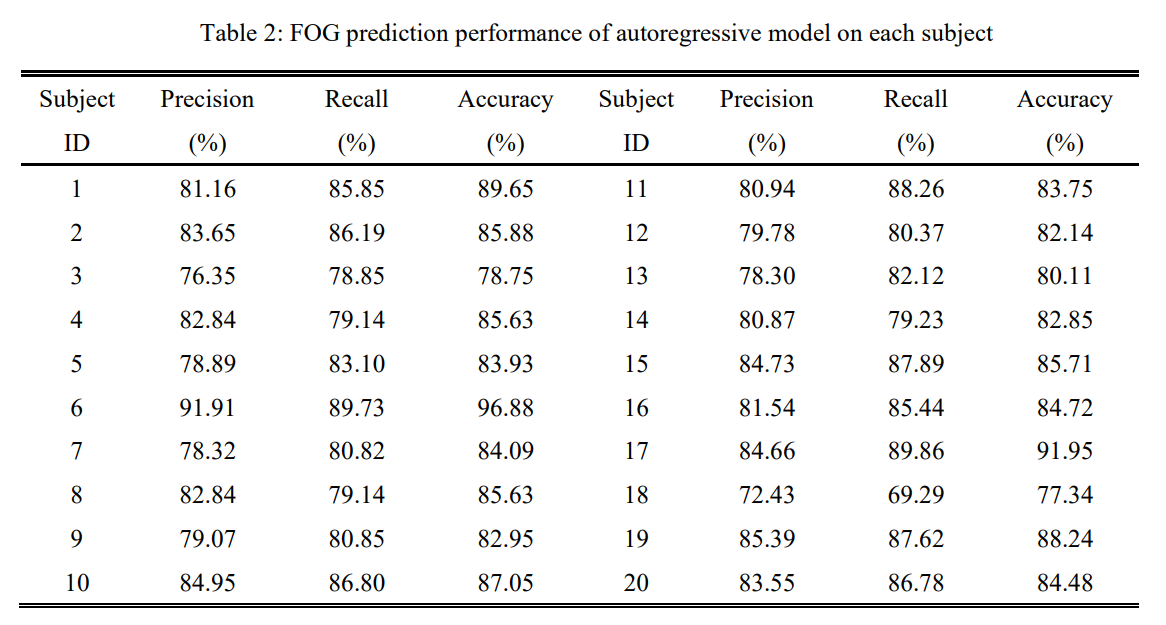Category: Parkinsonism, Others
Objective: The purpose of this study was to introduce an autoregressive predictive model to improve the accuracy for freezing of gait (FOG) prediction.
Background: Parkinson’s disease (PD) is the one of the most common neurodegenerative diseases affecting the elderly [1]. FOG is a movement disorder in patients with advanced PD, which is mainly manifested by sudden interruption of walking [2]. FOG often occurs when a patient begins walking, turning or passing through narrow passages. It impairs gait mobility, increases fall risk, and dramatically reduces quality of life [3]. FOG has shown resistance to pharmaceutical treatments as the disease progresses [4]. Therefore, intelligent non-pharmacologic treatments are widely studied. Sensory cue based on inertial wearable sensors is a promising treatment strategy, which collects the patient’s acceleration, gyroscope and other motion signals to provide external auditory or visual stimuli after FOG happens or even before it happens [5]. Prediction of FOG before it occurs can not only greatly improve the effect of intervention, but also avoid the occurrence of FOG to some extent.
Method: This study recruited 20 PD subjects who experienced FOG every day, including 13 males and 7 females. Each subject is asked to perform Timed Up and Go Test (TUG). Then, based on the accelerometer and gyroscope signals collected from 7 body parts by wearable sensors, we proposed an autoregressive predictive model to predict feature time series, followed by support vector machine classifier to discriminate FOG from normal walking based on the predicted features. Leave-one-subject-out (LOSO) method was adopted to evaluate model performance.
Results: As a result of feature extraction and selection, 13 typical time domain and frequency domain features were extracted to predict FOG (Table 1). The predictive model resulted in an average precision of 81.61%, recall of 83.37%, accuracy of 85.08% (Table 2), with an expected prediction horizon of 1.63 s, and the highest prediction accuracy was as high as 96.88%, which was higher than the previous studies to the best of our knowledge.
Conclusion: The FOG prediction algorithm yielded consistent results across different subjects. Our findings enable the possibility of wearable systems which predict with few seconds before an upcoming FOG, and start external cues to help the user avoid FOG.
References: [1] L.V. Kalia, A.E. Lang, Parkinson’s disease, The Lancet, 386(9996): 896-912, 2015.
[2] J.G. Nutt, B.R. Bloem, N. Giladi, et al., Freezing of gait: Moving forward on a mysterious clinical phenomenon, The Lancet Neurology, 10(8): 734-744, 2011.
[3] B.R. Bloem, J.M. Hausdorff, J.E. Visser, et al., Falls and freezing of gait in parkinson’s disease: A review of two interconnected, episodic phenomena, Movement Disorders, 19(8): 871-884, 2004.
[4] J. Nonnekes, A.H. Snijders, J.G. Nutt, et al., Freezing of gait: A practical approach to management, The Lancet Neurology, 14(7): 768-778, 2015.
[5] P. Ginis, E. Nackaerts, A. Nieuwboer, et al., Cueing for people with parkinson’s disease with freezing of gait: A narrative review of the state-of-the-art and novel perspectives, Annals of Physical and Rehabilitation Medicine, 61(6): 407-413, 2018.
To cite this abstract in AMA style:
SY. Ouyang, J. Zhao, SD. Chen. Prediction of freezing of gait in Parkinson’s disease based on wearable sensors [abstract]. Mov Disord. 2023; 38 (suppl 1). https://www.mdsabstracts.org/abstract/prediction-of-freezing-of-gait-in-parkinsons-disease-based-on-wearable-sensors/. Accessed September 12, 2025.« Back to 2023 International Congress
MDS Abstracts - https://www.mdsabstracts.org/abstract/prediction-of-freezing-of-gait-in-parkinsons-disease-based-on-wearable-sensors/


